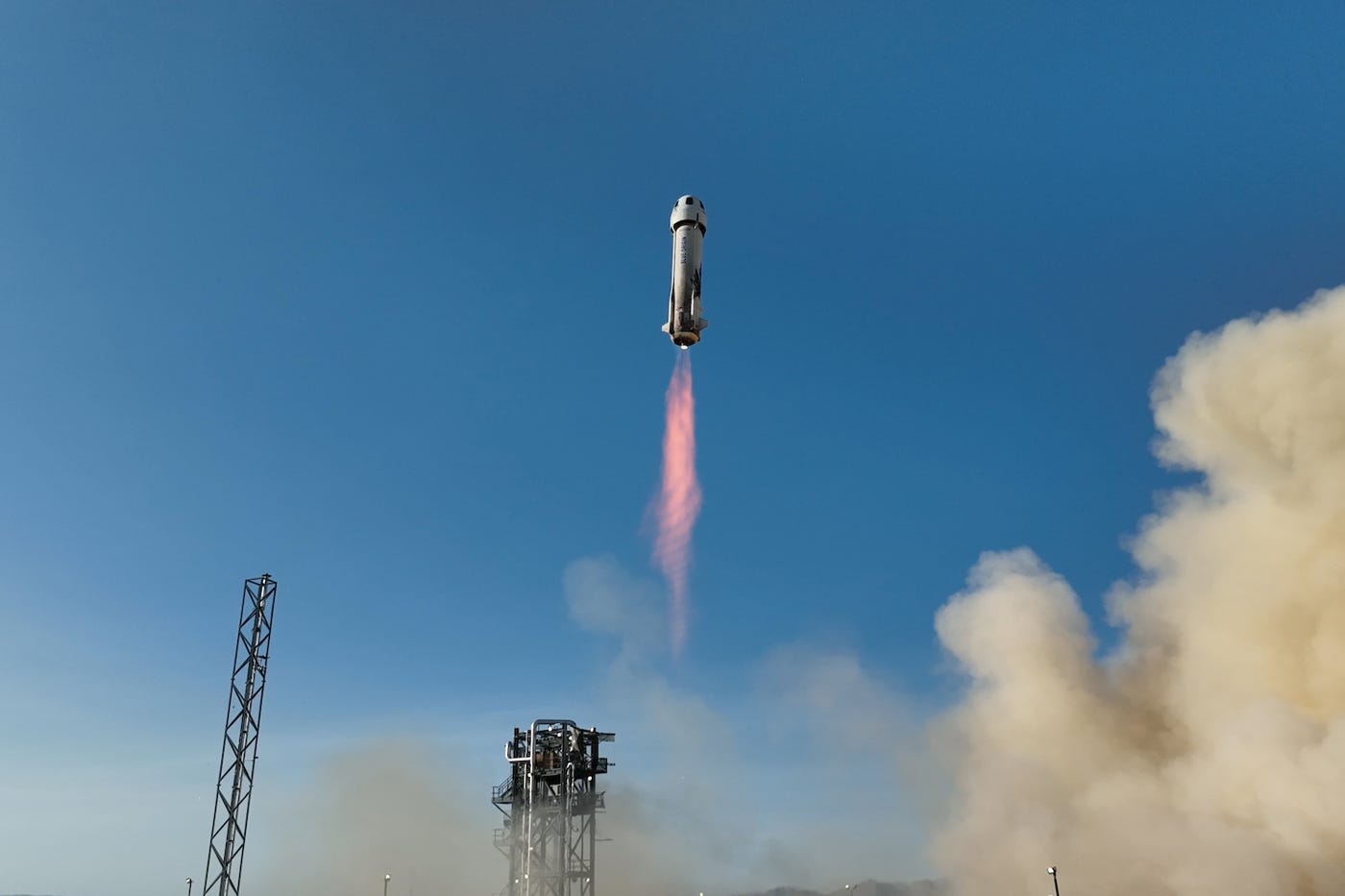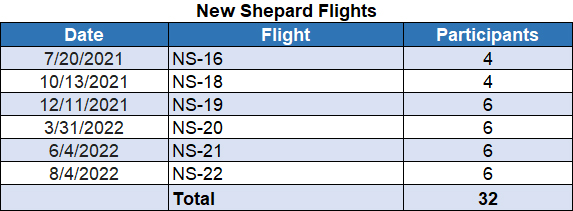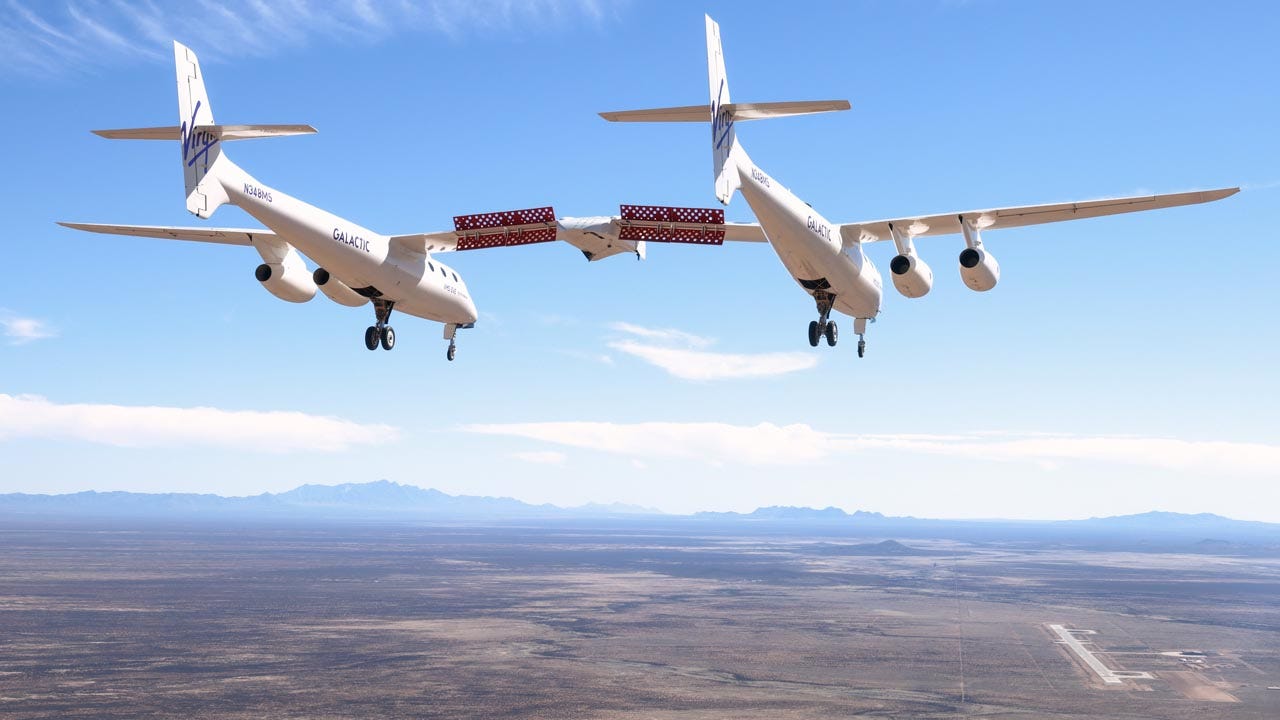Blue Origin Gears Up for Next New Shepard Flight as Anniversaries Loom
Progress in suborbital tourism has been painfully slow, but the hype must go on
It looks like Blue Origin will start flying people on its New Shepard suborbital vehicle soon after a gap that has stretched for nearly 20 months. The flight comes as the anniversaries of four flights — three successful, one fatal — approach that were pivotal in the development of the slow-moving suborbital space tourism industry, whose goal is to open up space to non-professional space travelers.
Amanda Nguyen announced on social media that she will be flying to suborbital space aboard New Shepard. The Vietnamese refugee and Nobel Peace Prize nominee is best known for leading Rise, a group that advocates for victims of sexual abuse. The self-described “civil rights astronaut” will become the first Vietnamese woman to fly to space.
Neither Blue Origin nor a non-profit group that is paying for her flight has announced a date for the launch or identified who else will be aboard. New Shepard can carry six passengers at a time.
Step by Step, Eventually
New Shepard’s most recent flight with people aboard was on Aug. 4, 2022. It went fine, but the next flight with only experiments aboard the following month suffered a booster failure. The capsule activated its abort system and landed safely under parachutes. Blue Origin resumed New Shepard flights in January 2024 by re-flying the experiments without anyone aboard.
The long gap in passenger flights is in keeping with Blue Origin’s cautious approach to spaceflight that emphasizes safety. The company’s motto is Gradatim Ferociter, which is Latin for Step by Step, Ferociously. Given Blue Origin’s slow pace, a better motto might be Gradatim Demus (Step by Step, Finally).
The emphasis on safety is admirable. However, you can’t really advance humanity’s future in space all that much by spending so much time on the ground. Or, for that matter, spending a handful of minutes floating around in zero gravity. Blue Origin needs to move faster and to start putting payloads into orbit.
That day is approaching. New Shepard has always been a technological steppingstone to the orbital New Glenn rocket, which is set to make its debut in August by launching a pair of orbiters to Mars.
Once New Glenn starts launching, flights of New Shepard will be a sideshow. Blue Origin might even decide that New Shepard has served its purpose and retire the booster.
The Glaciers are Melting Faster
To date, Blue Origin has launched six times with 32 passengers aboard. Rival Virgin Galactic has flown 11 suborbital missions, including six flights with 19 paying customers aboard.
That might sound like a lot, but these numbers are actually evidence of the glacial progress in suborbital space tourism. The extravagant promises made about this new field of adventure tourism for the rich have come up short over the past two decades.
Twenty years ago — on June 21, 2004, to be precise — Scaled Composites pilot Mike Melvill flew SpaceShipOne above the Karman line at 100 km (80.5 miles) that defines the boundary of space. It was the first privately funded crewed mission to reach space.
Four months later, Melvill and Brian Binnie repeated the feat on two separate flights in a five-day period to win the $10 million Ansari XPRIZE. The final prize-winning flight took place on Oct. 4, 2004, 47 years to the day after the Soviets launched the first artificial satellite, Sputnik I.
The prize’s founder, Peter Diamandis, waxed enthusiastically about the coming age of suborbital space tourism. Scaled Founder Burt Rutan claimed officials at NASA were shaking in their boots over the monumental breakthrough that his company had just accomplished with $28 million in funding from Microsoft Co-founder Paul Allen.
Rutan formed a partnership with Richard Branson’s Virgin Galactic to build a larger vehicle, SpaceShipTwo, to take average people on suborbital joy rides. Flights would begin as early as 2007, with 500 people flying in the first year alone.
When it convinced New Mexico to spend $200 million building Spaceport America, Virgin Galactic promised it would launch 50,000 people during the first 10 years of operation. Prices would eventually come down from $200,000 to as low as $50,000, opening up space to a much larger group of people.
Sucess at Last, and Then….
It would take 19 years — and two fatal accidents that claimed four lives — before Virgin Galactic would fly paying customers aboard SpaceShipTwo in June 2023. By then, the company had raised ticket prices twice to $250,000 and then $450,000. The company is now selling tickets for $600,000. (Blue Origin has never revealed what it charges customers for flights.)
Virgin Galactic’s successful June 2023 flight seemed to open the door for the company to quickly begin flying 800 ticketholders, some of whom paid full price to be among the first to fly way back in 2004-2005. Alas, it was not to be. Some long-term ticketholders did in fact fly on the first six commercial launche, but the company then announced a temporary halt to flights that could last two years or more.
Virgin Galactic concluded it couldn’t make much money flying four people with its lone SpaceShipTwo, VSS Unity, and aging VMS Eve mothership on a monthly basis. The company will retire the spaceship after one more flight in the second quarter of this year.
Virgin Galactic has projected that a new class of Delta-class spaceships capable of flying twice per week with six paying customers will be ready for commercial service in 2026. A new family of motherships will be ready the following year. Virgin Galactic would then begin flying hundreds and then thousands of tourists and revenues would soar.
If that sounds familiar, it should. It’s more or less the same plan Virgin Galactic had in 2004. The company now has actual flight experience under its belt, so they’re not starting from scratch. But here’s the problem: space projects are prone to schedule slips and budget overruns. And Virgin Galactic’s optimistic schedules and budgets never hold.
Slip Sliding to the Right
The current schedule actually represents a significant slip from just two years ago. In July 2022, Virgin Galactic announced a partnership with Aurora Flight Services to construct an advanced family of WhiteKnightTwo motherships that air launch SpaceShipTwos. The new aircraft would enter service in 2025, the same year that the Delta-class spaceships would begin making revenue-generating flights.
The new spaceships won’t enter commercial service until 2026, with the new WhiteKnightTwos following in 2027. Officials said they wanted to concentrate on the revenue-generating spacecraft first. However, that was not the full story.
What they didn’t tell anyone — shareholders, Wall Street analysts, the media — is that the partnership with Aurora had effectively ended in May 2023. According to a lawsuit filed last week by Aurora’s parent company, Boeing, the break came after the company informed Virgin Galactic it couldn’t build the new ships on the schedule and budget proposed.
Boeing is suing for what it claims is more than $26 million in unpaid invoices for work done on the program. The company also claims Virgin Galactic is in possession of propriety information it is not entitled to possess. Virgin Galactic denies the claims.
It would be nice to think that Virgin Galactic will be able to meet its current schedule. History is not on the company’s side. Delays and cost overruns are likely, with Virgin Galactic needing to raise more money by selling stock. Whether investors will still want to support the company if that day comes is an open question.
They won’t be able to look to Branson and the Virgin Group for funding. The British billionaire, who got his long-awaited suborbital flight in July 2021, recently said he has no further plans to invest in the company. Branson has sold Virgin Galactic stock worth more than $1 billion, and he now owns only 7.7 percent of a company he once fully owned.
What Exactly will They Celebrate?
The accomplishments of SpaceShipOne have become increasingly distant as the world moves into the second quarter of the 21st century. Their significance has faded over time as progress in the field has crawled. Twenty years ago, we were promised flights to space would be safe, frequent, and increasingly affordable. Today, they remain risky, infrequent and more expensive than ever.
The glacial progress raises the question of how the 20th anniversaries of SpaceShipOne’s three landmark flights will be celebrated. It will likely be awkward, even for people for whom hype is a second language. The flights were inspirational in terms of spurring on private space efforts, but the technology that resulted proven difficult to scale up for commercial use.
On Oct. 4, 2014, Diamandis gathered those involved at the Mojave Air and Space Port in California to mark the 10th anniversary of SpaceShipOne’s prize-winning flight. SpaceShipTwo hadn’t gotten anywhere near space yet, but everyone was optimistic that it would do so soon. Branson planned to be on the first commercial flight scheduled for early 2015.
Twenty-seven days later, SpaceShipTwo VSS Enterprise broke up over the Mojave Desert during a flight test. Scaled Composites pilot Mike Alsbury died; Pete Siebold parachuted to safety with an arm broken in four places and pieces of composite material in his eyes. Siebold would recover to fly another day. SpaceShipTwo’s commercial flights were delayed by eight years.
The 10th anniversary of that tragic day will also be marked on Halloween, a holiday on which we dress up as ghouls, ghosts and goblins to mock death. It’s a day those who witnessed the accident would just as soon forget, if that were at all possible.
The memories and emotions that trauma brings to the surface are an emotional form of acid reflux. The effects lessen over time, but they never completely go away. The practice of according special significance to anniversaries in five- and 10-year increments will make this one more difficult for many.
Alas, that is a story for another day.







